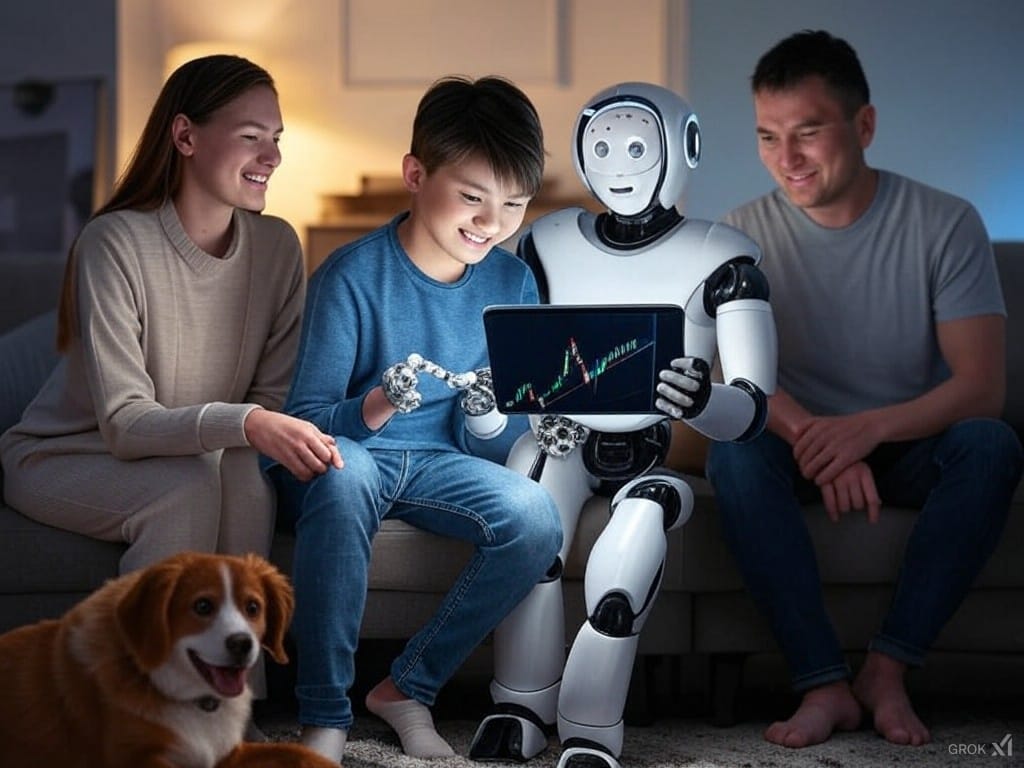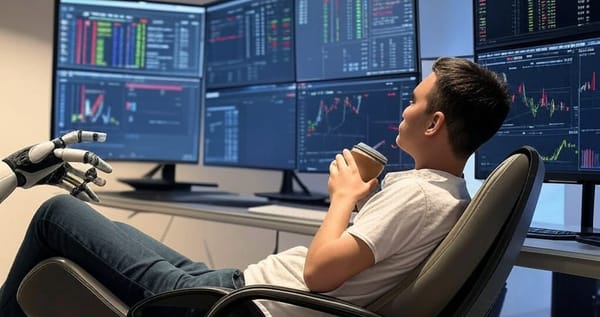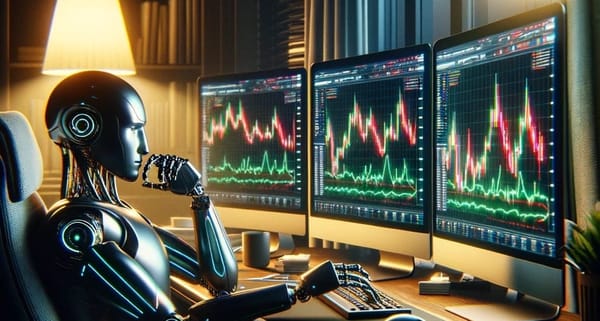AI Trading for Beginners: The Final Interview

I often get emails from readers asking me to explain complex topics in simple terms.
Recently, a curious reader emailed me, confessing their complete lack of knowledge about trading and asking me to break it down.
What followed was an organic email exchange where I answered their questions about trading’s purpose, how price fluctuations work and why AI bots are so useful.
Here’s a lightly edited version of our conversation, shared with permission.
Email Exchange
Reader:
Hi Kevin,
I read your article about automated trading tools and I have to admit... I don’t even know what “trading” really is. Why do people trade? Isn’t money supposed to just sit in a bank?
Kevin:
Hi there,
Thanks for reaching out! That’s a great question and honestly, one I hear a lot.
Trading, at its core, is about buying something at a low price and selling it at a higher price later. That “something” could be a stock (a piece of a company), gold, oil, or even foreign currencies like euros or yen. The goal is to make a profit from the price difference.
People trade because it’s a way to grow their money. For example, if you have $100 in a savings account, it might grow to $101 in a year thanks to interest (if you’re lucky). But if you invest that $100 in something like a stock, it could grow to $120 or even more, depending on how that stock performs. Trading is a way to actively make money work harder for you.
Reader:
Okay, I get the idea of buying low and selling high, but why do prices change at all? Who decides that something is worth more today than it was yesterday?
Kevin:
Great question. Prices change because of supply and demand.
If more people want to buy something, the price goes up because it’s in demand. If people lose interest, the price drops. It’s the same reason a popular concert ticket costs more the closer you get to the event: more people want it, so the price spikes.
In trading, prices fluctuate constantly because markets react to news, events and even rumors. For example, if a company announces great quarterly earnings, its stock price might rise because people see it as a good investment. On the flip side, if there’s bad news (like a scandal or poor performance) the price might drop as people rush to sell.
These fluctuations create opportunities for traders. The trick is recognizing patterns in those price movements to buy at the right time and sell for a profit.
Reader:
Patterns? So there’s a logic to all this? Can’t people just look for these patterns and trade manually?
Kevin:
Yes, there is logic: prices often follow trends or patterns based on how markets behave. For instance, if a stock has been steadily rising for weeks, it might indicate a strong trend and traders will jump in, expecting it to keep going up.
However, manually spotting and acting on these patterns is incredibly hard. Prices fluctuate every second and markets run 24/7. You’d need to be glued to your screen constantly, analyzing charts and making split-second decisions. It’s exhausting and prone to human error.
That’s where trading bots like Galileo FX come in. They’re designed to analyze these patterns automatically, 24/7 and trade based on preset rules. For example, Galileo FX can identify when prices are about to reverse (a trend reversal) and make trades accordingly. It eliminates the guesswork and the emotional reactions that cause most people to lose money when trading manually.
Reader:
Okay, so the bot trades for you. But what kind of money are we talking about here? Is it real money, or is this some kind of cryptocurrency thing I can’t spend?
Kevin:
It’s 100% real money—money you can withdraw to your bank account and use to pay bills, buy groceries, or book a vacation.
For example, if you’re trading stocks, you buy and sell them using your broker’s platform. Any profits you make are added to your account balance, which you can transfer to your regular bank account. Galileo FX works the same way: it connects to your trading platform, like MetaTrader 4 or 5 and trades real, spendable money.
This isn’t some kind of Monopoly money situation or speculative crypto that only works in certain places. When I started, I made my first withdrawal after a month of trading and paid for a weekend trip with it. Seeing that money in my bank account made it all feel very real.
Reader:
That’s really interesting. But if these bots are so good, why isn’t everyone using them?
Kevin:
Great question. Honestly, the biggest reason is that many people just don’t know about AI trading bots yet. It’s a bit like when smartphones first came out. Not everyone realized how much they’d change things.
Another reason is that some bots out there don’t work well, and people assume they’re all the same. Bots like Galileo FX are different because they're based on solid strategies and years of testing, but not everyone knows that yet.
There’s also the fact that while Galileo FX automates a lot, it’s not completely hands-off. You still need to check in for 15 minutes a day, like keeping an eye on a slow cooker. And, like anything high-quality, it costs money, which can make people hesitate. But it’s an investment in a tool that’s designed to grow your savings, not gamble with them.
I hope that clears it up! If you have more questions, I’m happy to help.
Reader:
Alright, one last question. What does a stock even look like? Can I hold one in my hand?
Kevin:
Not really! Stocks used to come with paper certificates, but today they exist digitally in your brokerage account.
When you buy shares in a company, you’re essentially buying a piece of their success... and that ownership is reflected in your account balance.
So, while you can’t physically hold a stock, you can absolutely hold the profits it earns for you in your wallet.
And isn’t that what really matters?


